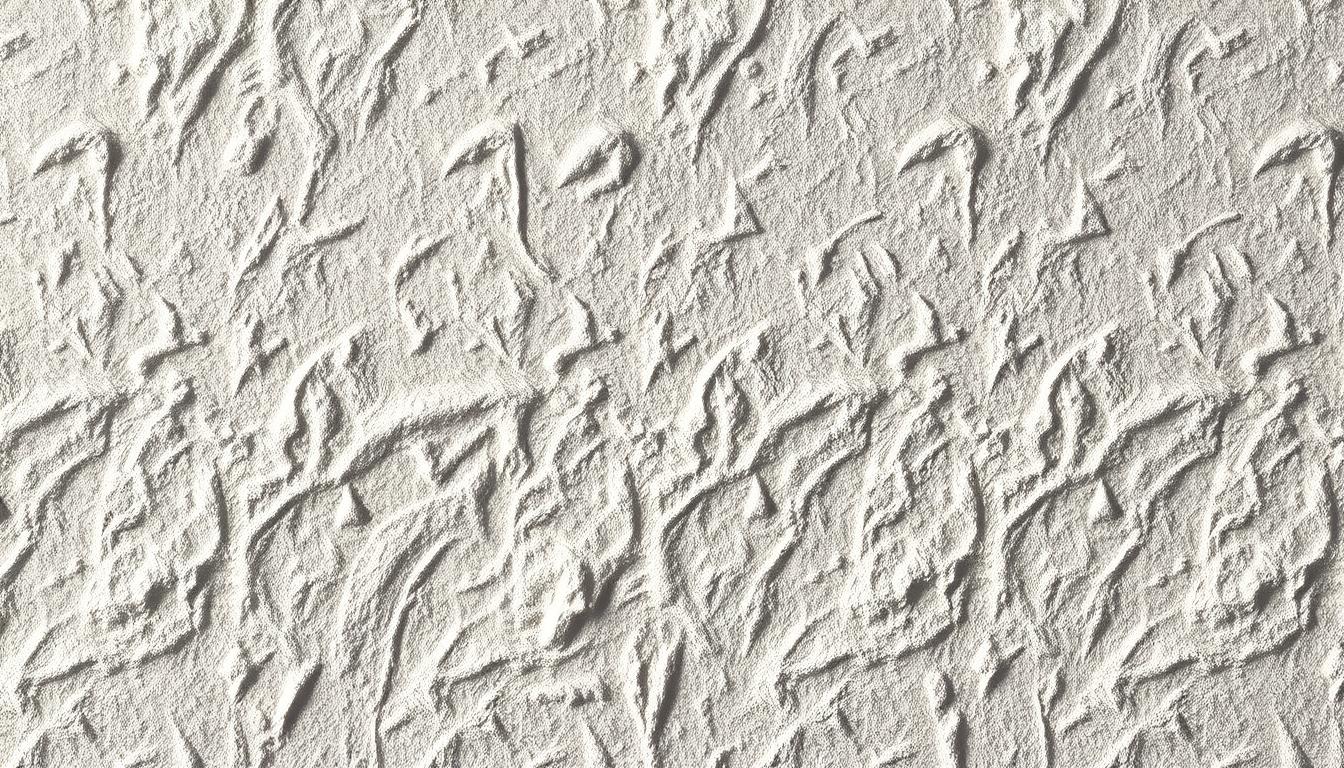Decorative plaster “cork” is a wonderful way to decorate walls. It allows for the creation of a unique design. It combines a high level of aesthetics and functionality.
Cork plaster is ideal for finishing both external and internal walls. It consists of environmentally friendly components. This makes it safe for use in residential and office spaces.
Cork plaster has many advantages. It is very durable, resistant to temperature fluctuations and moisture. Different textures and colors can also be created.
Decorative plaster “cork” is suitable for various surfaces. This can be concrete, brick, plywood, wood, particle board, and drywall.
Decorative plaster “cork” is very popular for finishing walls and ceilings. According to data, about 70% of modern interiors use it. About 60% of consumers choose it for its versatility and aesthetics.
Highlights
- Decorative plaster “cork” is used for finishing walls and ceilings
- Cork plaster has a high level of strength and resistance to temperature fluctuations
- Decorative plaster “cork” can be applied to various surfaces
- Decorative plaster “cork” is a popular choice for finishing walls and ceilings in 70% of modern interiors
- Decorative plaster “cork” has a number of advantages, including the ability to create different textures and colors
- Cork plaster consists of environmentally friendly components, making it safe for use in residential and office spaces
What is decorative plaster “cork”?
Decorative plaster “cork” is a special material for wall finishing. It creates an individual design. The history of this plaster began long ago, and today it is very popular.
Cork plaster is used for interior work. It is ideal for finishing walls, ceilings, and other surfaces. It can be used for both interior and exterior work.
Cork plaster is very strong and resistant to various conditions. It is not afraid of temperature fluctuations and moisture. Additionally, different textures and colors can be created.
Advantages of using “cork” plaster
- High strength and resistance to temperature fluctuations and moisture
- Ability to create different textures and colors
- Versatility of application (interior and exterior work)
- Eco-friendliness and safety for health and the environment
Cork plaster is very popular among designers and homeowners. It allows for the creation of a unique design. It also provides high quality and durability of the material.
Preparation for working with decorative plaster
Before starting work with decorative plaster, it is necessary to prepare tools and materials. This includes assessing and preparing the surface. It is also important to ensure your safety while working.
For preparation, it is necessary to remove the old material and clean it to smoothness. Apply an antibacterial agent, fill in cracks, and apply a primer. Only then can you start applying decorative plaster.
Plastering work must be carried out in accordance with all requirements. This will ensure the long-term operation of decorative plaster.
For ideal cleanliness and evenness of the walls, it may be necessary to repeat the preparation several times. The minimum thickness of the finishing putty layer should be at least 1 mm. This will ensure proper adhesion.
Using a primer paint with quartz or other fillers will increase the adhesion of the plaster to smooth surfaces.
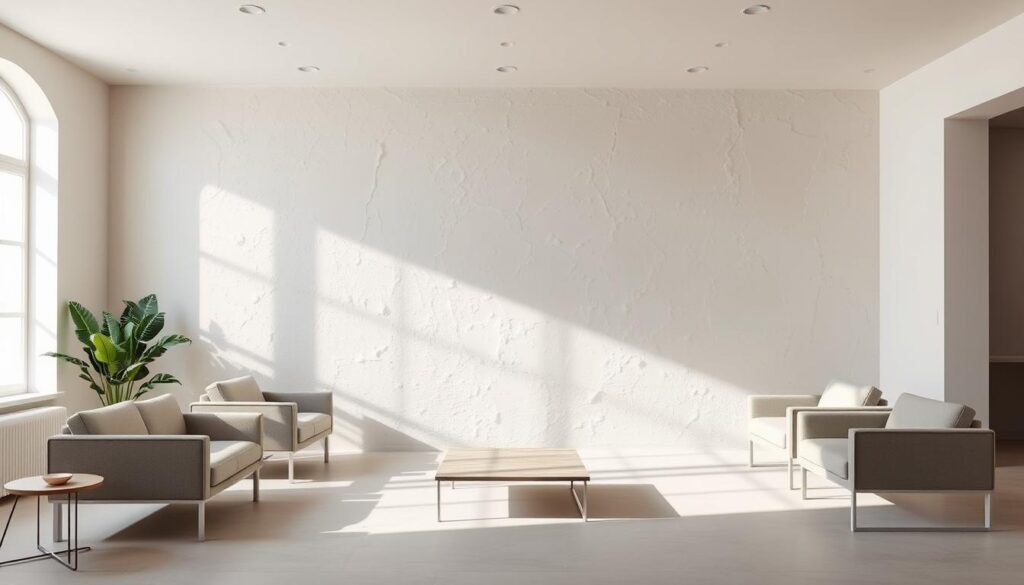
More details about surface preparation can be read on the website akvilon. Proper surface preparation is critically important for the reliability and durability of decorative plaster.
Choosing and ordering “cork” plaster
When choosing “cork” plaster, it is important to pay attention to the quality of the material. It is also important where you buy it. Modern decor often includes masonry plaster. It protects walls well from external factors.
It is recommended to consult professionals for working with decorative plaster. They will help you choose quality material. They will also ensure proper application.
https://www.youtube.com/watch?v=Gxsag3Lc4os
When choosing a manufacturer of “cork” plaster, it is important to check the company’s reputation. Decorative plaster “cork” is available in two forms. This is a dry mix in bags and a ready-made product in plastic buckets.
The optimal grain size for plaster is 2-2.5 mm. Consumption depends on the grain size. This affects the thickness of the layer. Decorative plaster “cork” lasts at least 5 years without repair.
Technique for applying decorative plaster
Decorative cork plaster is very popular for wall finishing. For high-quality work, it is important to follow the application technique. It includes several stages to create a beautiful surface.
The first stage is priming. This is a very important step. It ensures good adhesion of the plaster to the surface. Then the main layer is applied, which can be done with special tools.
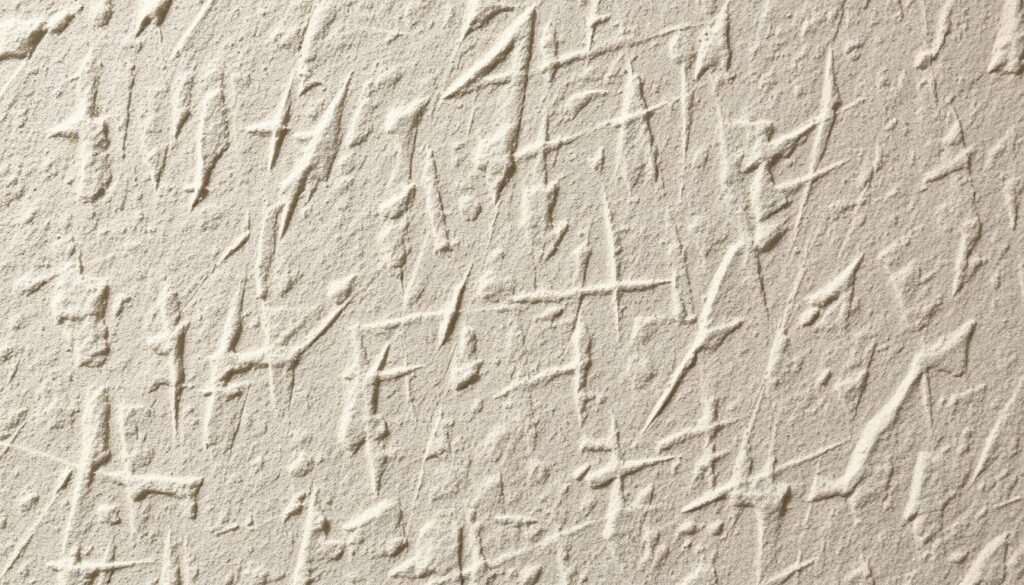
The third stage is texture formation. For this, a special trowel or roller can be used. The choice of tool depends on the desired effect. Decorative cork plaster is suitable for various surfaces, such as concrete, brick, wood, and drywall.
Cork plaster is very adhesive, weather-resistant, and resistant to mechanical damage. It is ideal for facade work and finishing walls made of various materials.
Means for correcting plaster application
To make the walls beautiful, it is necessary to use special means. This includes various techniques and methods. They help correct mistakes and add decoration.
Performing interior work with plaster requires experience. Therefore, it is better to consult professionals.
When applying plaster, it is important to follow the rules. For example, the thickness of the layer should correspond to the size of the grains. The time for processing before applying “cork strokes” is about 30-60 minutes.
To improve plasticity, 5-15% sand by weight of the mixture should be added. Decorative plaster for concrete can have different textures. This depends on the technique used.
- Alternative techniques for applying plaster
- Correcting mistakes during plaster application
- Decorative elements to enhance the appearance of plaster
All these means help make the walls and interior work better. Your interior will become unique and beautiful.
After completing the work: care for the plaster
Care for the plaster is important after its completion. It includes cleaning, prevention, and renewal. This is especially important for the interior, as plaster affects the appearance of the room.
Cleaning should be done with soft means to avoid damage. For prevention, it is necessary to regularly check and carry out repair work. Renewal can be done with a new layer or special paints.
Care for the external facade is important after work. This will help avoid damage and maintain appearance.
Care costs depend on the work and materials. But it is a valuable investment for the service and appearance of the room. For better results, it is better to consult professionals.
| Type of care | Cost | Duration |
|---|---|---|
| Cleaning plaster | From 500 to 1000 hryvnias | 1-2 days |
| Preventing damage | From 1000 to 2000 hryvnias | 2-3 days |
| Renewing old plaster | From 2000 to 5000 hryvnias | 3-5 days |
The most common mistakes when applying “cork”
When using decorative plaster “cork,” mistakes often occur. For example, insufficient surface preparation can lead to poor adhesion. It is also important to strictly adhere to the proportions of the mixture so that the plaster has the required properties.
Another common mistake is technical errors during texture formation. To avoid these mistakes, it is better to consult experienced specialists. They have knowledge of modern decor and masonry plaster.
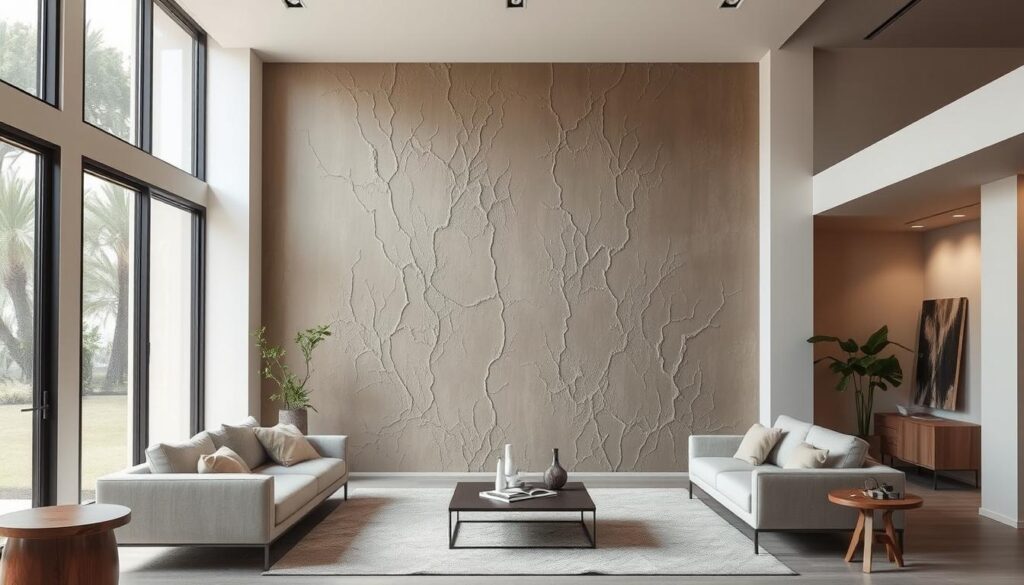
To avoid mistakes when applying “cork,” several rules should be followed. For example, before application, the wall should be cleaned of dirt and old paint. It is also important to use high-quality materials and follow the manufacturer’s instructions.
Decorative plaster “cork” is very popular for wall finishing. It is resistant to mechanical damage and mold. But for high-quality application, it is better to consult professionals.
How to choose a color for decorative plaster
Choosing a color for decorative plaster is very important. This is a key stage in creating a unique interior. Decorative cork plaster offers many colors. You can choose what best suits your style and taste.
When choosing a color, consider its impact on the interior. Color can change the mood in a room. Warm colors create coziness, while cool colors create modernity.
To choose the right color, you can refer to advice on color combinations. For example, combine colors that complement each other well. You can also use a color that is adjacent on the color wheel. Trends of 2023 can help you with this.
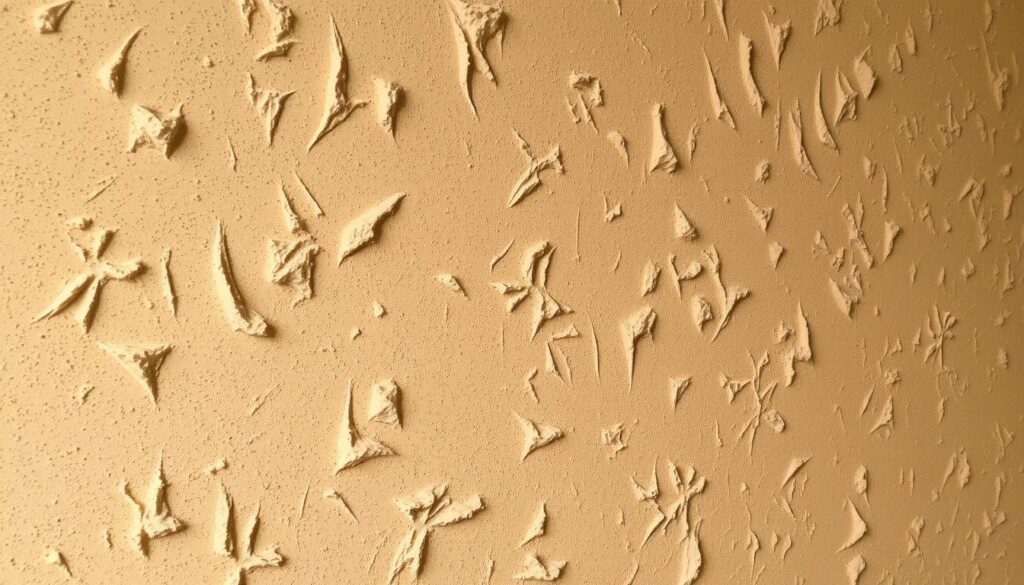
Don’t forget that decorative cork plaster is not only for walls. It is also suitable for ceilings. This will allow you to create a unique design in any room.
Decorative plaster “cork” in different interiors
Decorative plaster “cork” is a versatile tool for interior work. It helps create unique and stylish interiors. Wall plaster is a key element that shows the quality of work.
Depending on the style of the interior, different plaster application techniques can be chosen. For a classic style, traditional techniques can be used. For example, applying plaster in several layers, followed by fixing the texture.
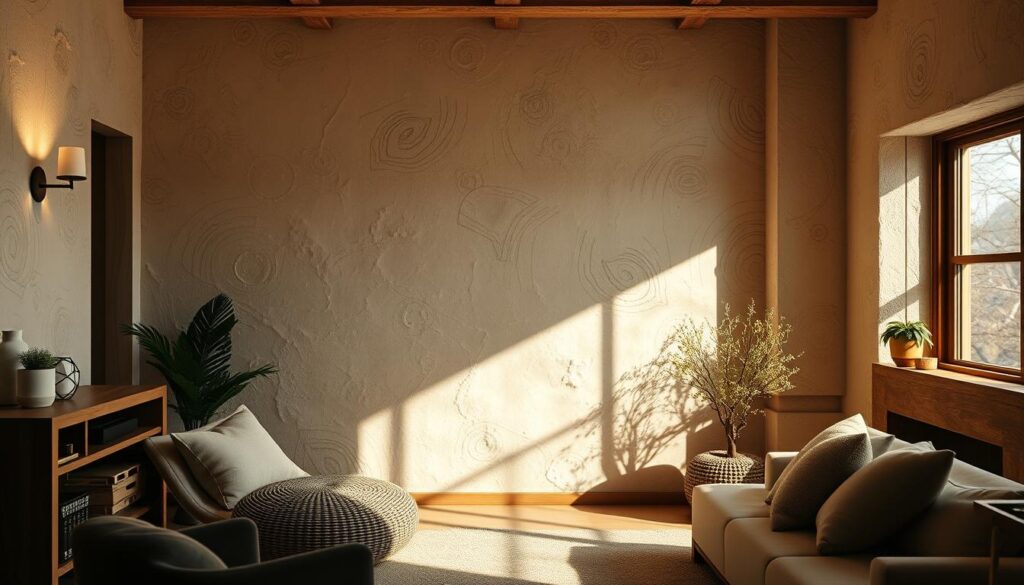
For a modern style, modern techniques can be used. For example, applying plaster in one layer, followed by fixing the texture.
Loft and minimalism are styles where it is important to appreciate the quality of work. For this style, minimal decoration can be used. This allows for a better appreciation of the quality of work.
Cost of decorative plaster “cork”
Decorative plaster “cork” is very popular for finishing rooms. It allows for the creation of various interior designs. The price of this plaster depends on many factors, such as materials, labor costs, and the place of purchase.
When choosing decorative plaster “cork,” it is important to consider the quality of the solution. It is also important to consider the geometry of the building, the number and texture of layers. Don’t forget about the need for painting, the level of the building, and the distance of the object.
To reduce the cost of work, you can try to get discounts for large volumes. It is important to accurately perform all stages of work. This includes preparation, priming, applying layers, and painting.
The price of decorative plaster “cork” can vary depending on the manufacturer and type of material. For example, the price of decorative cork plaster Ceresit CT 35 can be around 415 ₴. A similar plaster Baumit EdelPutz SM2 may cost around 801 ₴. It is important to choose the material based on quality, price, and design possibilities.
Plastering work with decorative plaster “cork” can be expensive. But they open up many possibilities for interior design. It is important to consider the quality of the material, cost, and design possibilities. It is also important to understand the application process and look for discounts for large volumes of work.
Conclusion: is it worth experimenting with “cork”?
Decorative plaster “cork” is a great way to decorate. It creates unique surfaces that give rooms a modern look. Modern decor with its help is becoming increasingly popular.
Working with “cork” requires skills and attention. But with proper preparation and adherence to technology, you can achieve excellent results. For beginners, it is better to consult professionals or try on a small area.
In conclusion, “cork” is a great choice for those who want to give their home a special charm. This technique opens up wide possibilities for creativity.
